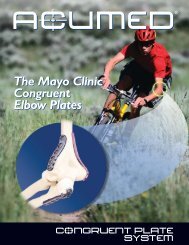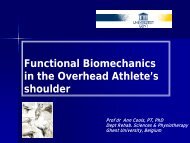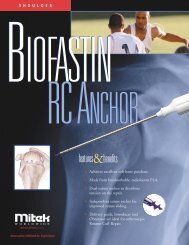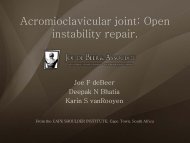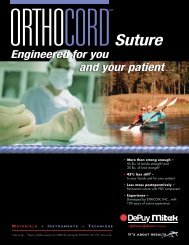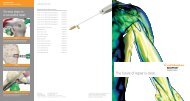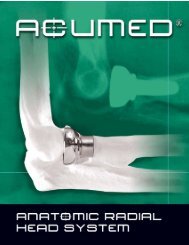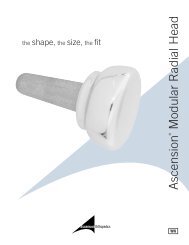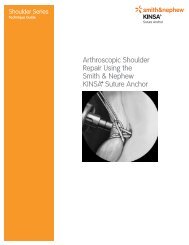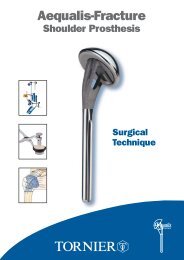Scapula Plates, Acumed - ShoulderDoc.co.uk
Scapula Plates, Acumed - ShoulderDoc.co.uk
Scapula Plates, Acumed - ShoulderDoc.co.uk
You also want an ePaper? Increase the reach of your titles
YUMPU automatically turns print PDFs into web optimized ePapers that Google loves.
William B. Geissler, M.D.Step 5: Plate Selection and PlacementThe appropriate left or right Glenoid Plate is selected from thesystem. The plate is placed on the superior surface to stabilizefractures of the posterior margin of the glenoid and anyintra-articular fragments.Once the plate’s ideal positioning has been selected, it isprovisionally stabilized to the glenoid with bone clamps (PL-CL04).The plate may be filled with locking or non-locking screwsdepending on the surgeon’s preference.Step 6: Non-Locking Screw InsertionThe non-locking screws may be placed uni<strong>co</strong>rtical or bi<strong>co</strong>rtical.Although 3.5mm screws (CO-3XX0) are re<strong>co</strong>mmended, optional2.7mm (CO-27XX) and 4.0mm (CA-4XX0) screws areavailable in the system. Using the appropriate drill size (MS-DC28or MS-DC5020) and the drill guide (PL-2095), drill, measure fordepth (MS-9022) and place the screws into the slots with theassembled driver. Once the two screws are installed, the boneclamp(s) may be removed.Step 7: Locking Screw InsertionUsing the locking drill guide (MS-LDG35) and the 2.8mm drill(MS-DC28), place the 3.5mm locking screws (COL-3XX0) into thethreaded holes.Note: Tapping (MS-LTT35) is re<strong>co</strong>mmended for patients with densebone. The drill guide (MS-LDG35) must be removed prior to tapping.Step 8: Final AssessmentAn intraoperative radiograph is re<strong>co</strong>mmended to check the positionof the screws and the final reduction of the fracture. The musculatureis then re-approximated directly over the plate. The skin is thenclosed in layers with a subcuticular stitch for the remaining skin layer.Post-op Proto<strong>co</strong>lThe patient is placed in an arm sling and starts pendulum range of motion exercises. Passive motion exercises are initiated from the firstfour weeks, active assisted from four to six weeks, and active strengthening is initiated at six weeks post operatively, once healing is seenradiographically.10



